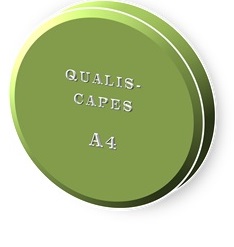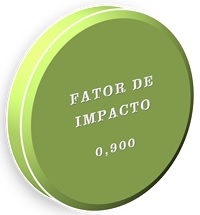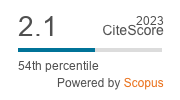Effectiveness of Baits Containing Entomopathogenic Fungi Against Gryllus assimilis
DOI:
https://doi.org/10.1590/1983-21252025v3812910rcKeywords:
Biological control. Bioformulations. Insects. Cricket.Abstract
The use of entomopathogens, including entomopathogenic fungi, for biological control provides a viable alternative to chemical pesticides for pest management. Entomopathogenic fungi infect and cause epizootics in a wide range of insect orders, including Hemiptera, Lepidoptera, Coleoptera, Diptera, Hymenoptera, and Orthoptera. This study aimed to assess the insecticidal efficacy of the entomopathogenic fungi Metarhizium anisopliae, Beauveria bassiana, and Isaria fumosorosea against Gryllus assimilis (Orthoptera: Gryllidae) under laboratory conditions. The experiments were conducted using a completely randomized design with four replications. Two strains of B. bassiana (IBCB 66 and PL 63), one strain of M. anisopliae (E9), and one strain of I. fumosorosea (ESALQ 1296) were evaluated. The highest mortality of G. assimilis was observed seven days post-treatment with M. anisopliae at 0.15 g, resulting in resulting in over 50% insect mortality.
Downloads
References
ALMEIDA, J. E. M. Biofactories for the production of mycopesticides in Brazil: business opportunities and innovations. Brazilian Journal of Animal and Environmental Research, 3: 2444-2557, 2020.
ALVES, S. B. Técnicas de laboratório: Controle Microbiano de Insetos. São Paulo, SP: Manole. 1986. 407 p
ANANI, O. A. et al. Effects of pesticide toxins on food safety: current developments In: MISHRA, P.; MISHRA, R.R.; ADETUNJI, C.O (Eds.). Innovations in Food Technology. New York, NY: Springer, 2020. v. 1., cap. 24, p. 313-321.
BOOMSMA, J. J. et al. Evolutionary interaction networks of insect pathogenic fungi. Annual Review of Entomology, 59: 467-485, 2014.
EL-GARHY, S. M. M. Impact of certain baits for controlling Anacardium egyptium (L.), under laboratory and field conditions, Fayoum Journal of Agricultural Research & Development, 25: 238-249, 2011
FENG, M. G.; POPRAWSKI, T. J.; KHACHATOURIANS, G. G. Production, rmulation, and application of the entomopathogenic fungus Beauveria bassiana for insect control: current status. Biocontrol Science and technology, 4: 3-34, 1994.
HASHIMI, M. H.; HASHIMI, R.; RYAN, Q. Toxic Effects of Pesticides on Humans, Plants, Animals, Pollinators and Beneficial Organisms Asian Plant Research Journal, 5: 37-47, 2020.
LIMBERGER, G. M.; NERY, L. E. M.;FONSECA, D. B. Reproductive status modulates mortality rate, lifespan and egg production, but do not physiological aging in the field cricket Gryllus assimilis (Fabricius, 1775) (Orthoptera: Grylidae), Neotropical Entomology, 50: 237-246, 2021.
HANEL, H. A. Selection of a fungus species, suitable for the biological of the termite Nasutitermes exitiosus (Hill) (Isoptera: Termitidae). Zeitschrift Angewandte Entomologie, 94: 237-245, 1982.
HUMBER, R. A. Evolution of entomopathogenicity in fungi. Journal of Invertebrate Pathology, 98: 262-266, 2008.
ISLAM, W. et al. Insect-fungal-interactions: A detailed review on entomopathogenic fungi pathogenicity to combat insect pests. Microbial Pathogenesis, 159: 105122, 2021.
KONAR, A.; SANTANU PAUL, S. P. Efficacy of some granular insecticides and biobiopesticides against mole cricket on potato. Journal of Applied Zoological Researchers, 16: 59-60, 2005.
LACEY, L. A. et al. Fungos entomopatogénicos (Hipocreales) para controle do psilídio da batata, Bactericera cockerelli (Sulc) (Hemiptera: Triozidae) em em uma área endémica para doença zebra chip da batata, Controle Biológico, 56: 271-278, 2011.
LOPES, R. B. et al. Efficiency of formulations of Beauveria bassiana and Metarhizium anisopliae for the control of nymphs of Amblyomma cajennense (Fabricius, 1787). Revista Brasileira Parasitologia Vetetrinaria, 16: 27-31, 2007.
MAINA, U. M. et al. A review on the use of entomopathogenic fungi in the management of insect pests of field crops. Journal of Entomology and Zoology Studies, 6: 27-32, 2018.
MANFO, F. P. T. et al. Evaluation of the Effects of Agro Pesticides Use on Liver and Kidney Function in Farmers from Buea, Cameroon. Journal of Toxicology, 29: 2305764, 2020.
MASCARIN, G. M.; JARONSKI, S. T. The production and uses of Beauveria bassiana as a microbial insecticide. World Journal of Microbiology and Biotechnology, 32: 1-26, 2016.
MEIKLE, W. G. et al. Evaluation of an entomopathogenic fungus, Paecilomyces fumosoroseus (Wize) Brown & Smith (Deuteromycota: Hyphomycetes) obtained from formosan subterranean termites (Isoptera: Rhinotermitidae). Journal of Applied Entomology, 126: 315-322, 2005.
PEDRINI, N.; CRESPO, R.; JUÁREZ, M. P. Biochemistry of insect epicuticle degradation by entomopathogenic fungi. Comparative Biochemistry and Physiology Part C: Toxicology & Pharmacology, 146: 124-137, 2007.
PELIZZA, S. et al. Application of Beauveria bassiana using different baits for the control of grasshopper pest Dichroplus maculipennis under field cage conditions. Journal of King Saud University – Science, 31: 1511-155, 2019.
RAMANUJAM, B. et al. Management of Insect Pests by Microorganisms. Proceedings of Indian National Science Academy, 80: 455-471, 2024.
ROHRIG, B. Entomopathogenic fungi in pest control: what they are and how to use them in the crop. Blog Aegro, 2021. Available at: https://blog.aegro.com.br/fungos-entomopatogenicos-no-controle-de-pragas/ Access on: Dec. 20, 2022.
R DEVELOPMENT CORE TEAM. Fundação R para Computação Estatística, Viena, 2023.
SCHNEIDER-ORELLI, Entomologisches Praktikum. 2. ed. Suíça: HR Sauerlander, 1947. 237 p.
SHAH, P. A; PELL, J. K. Entomopathogenic fungi as biological control agents. Applied Microbiology and Biotechnology, 61: 413-423, 2019.
SHARMA, A.; SHARMA, S.; YADAV, P.K. Entomopathogenic fungi and their relevance in sustainable agriculture: A review, Cogent Food & Agriculture, 9: 2180857, 2023.
STONE, L. B. L.; BIDOCHKA, M. J. The multifunctional lifestyles of Metarhizium: Evolution and applications. Applied Microbiology and Biotechnology, 104: 9935-9945, 2020.
TUPE, S. G. et al. Development of Metarhizium anisopliae as a mycoinsecticide: from isolation to field performance. Journal of Visualized Experiments, 125: 55272, 2017.
VEGA, F. E. et al. Fungal Entomopathogens. Insect Pathology, 2: 171-220, 2012.
Downloads
Published
Issue
Section
License
Os Autores que publicam na Revista Caatinga concordam com os seguintes termos:
a) Os Autores mantêm os direitos autorais e concedem à revista o direito de primeira publicação, com o trabalho simultaneamente licenciado sob a Licença Creative Commons do tipo atribuição CC-BY, para todo o conteúdo do periódico, exceto onde estiver identificado, que permite o compartilhamento do trabalho com reconhecimento da autoria e publicação inicial nesta revista, sem fins comerciais.
b) Os Autores têm autorização para distribuição não-exclusiva da versão do trabalho publicada nesta revista (ex.: publicar em repositório institucional ou como capítulo de livro), com reconhecimento de autoria e publicação inicial nesta revista.
c) Os Autores têm permissão e são estimulados a publicar e distribuir seu trabalho online (ex.: em repositórios institucionais ou na sua página pessoal) a qualquer ponto antes ou durante o processo editorial, já que isso pode gerar alterações produtivas, bem como aumentar o impacto e a citação do trabalho publicado (Veja O Efeito do Acesso Livre).







